Catocala violenta
Catocala violenta
kah-TOCK-uh-lahmvye-oh-LEN-tuh
Henry Edwards, 1880

Catocala violenta Arizona, courtesy of Bruce Walsh.
This site has been created by
Bill Oehlke at oehlkew@islandtelecom.com
Comments, suggestions and/or additional information are welcomed by Bill.
| TAXONOMY:
Superfamily: Noctuoidea
Family: Noctuidae
Group: Noctuinina
Subfamily: Catocalinae
Genus: Catocala, Schrank, 1802
| |
MIDI MUSIC
"Moon River"
copyright C. Odenkirk
MIDI CITYON.OFF
<bgsound src="moon.mid" LOOP=FOREVER>
|
DISTRIBUTION:
Catocala violenta
(wingspan: 65-80mm) flies from
Colorado to Arizona,
east to Texas and into Mexico.
It has also been reported in
New Mexico and
Utah
The two elongated, well-defined spikes high in the postmedial line,
extending to the subterminal line greatly resemble those of
Catocala ilia Cramer. The next tooth is very short. There is considerable brown shading in
the forewing between the postmedial and subterminal lines. The
subreniform spot is light with a light bar extending obliquely to
the costa.
In the hindwing, the inner black band is almost complete and there are
considerable dark hairs along the inner margin, well onto the claret scales of the
basal area. The almost straight-lined, slightly obtuse angle formed by the inner edge of the black marginal band is a
consistent character. The hindwing fringe is white and heavily barred. |
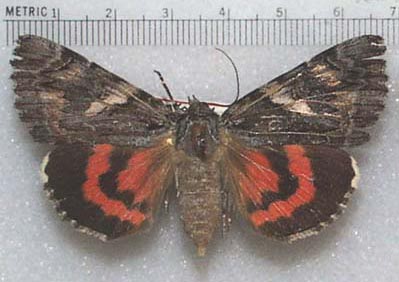
|
FLIGHT TIMES AND PREFERRED FOOD PLANTS:
Catocala
violenta flies as a single
generation with moths on the wing from July into August.
The Catocala violenta caterpillar feeds on oak species.
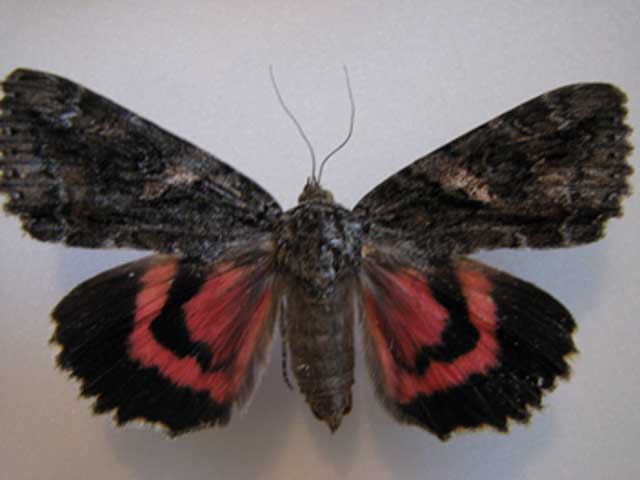
Catocala violenta, Walnut Canyon, Coconino County, Arizona,
September 13, 2008, courtesy of Evan Rand.
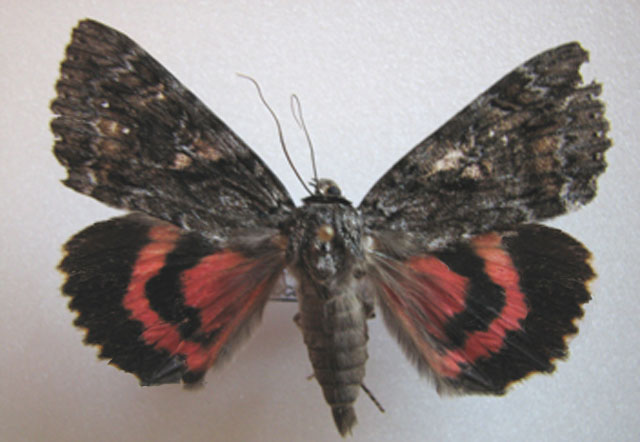
Catocala violenta, Payson, Gila County, Arizona,
August 10, 2007, courtesy of Evan Rand.
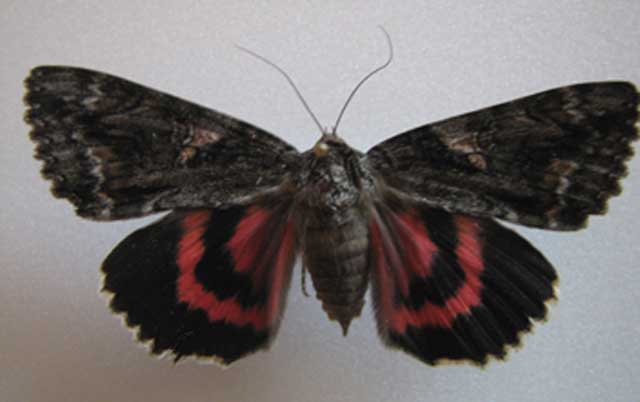
Catocala violenta, Payson, Gila County, Arizona,
August 6, 2007, courtesy of Evan Rand.
Visit Catocala violenta, Long Park, Chiricahua Mountains,
Cochise County, Arizona, July 2, 2010, courtesy of Evan Rand.
ECLOSION:
Adults eclose from pupae formed under leaf litter.
SCENTING AND MATING:
Catocala violenta females
emit an airbourne pheromone and males use their antennae to track the
scent plume.
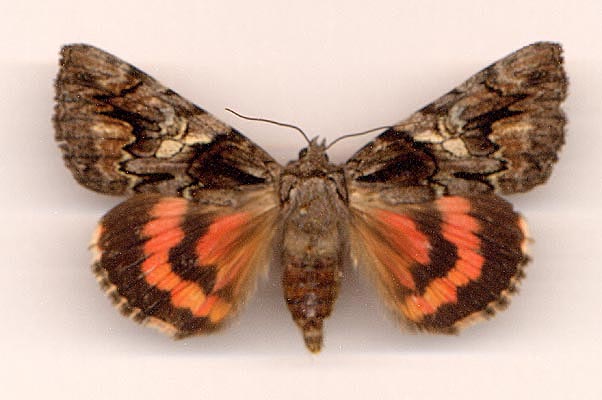
Catocala
violenta (probably female)
from Mexico, courtesy of Kirby Wolfe.

Catocala
violenta (probably male)
from 1 mi S Pena Blanca Lake, 3960'
Santa Cruz Co, AZ. Aug 4 1999,
Kelly Richers, collector, at uv trap.
EGGS, CATERPILLARS, COCOONS AND PUPAE:
Eggs are deposited on tree bark in the fall and hatch the
following spring.
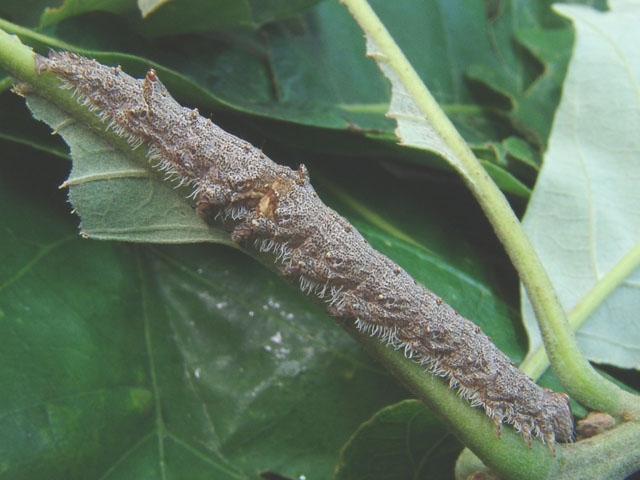
Catocala violenta fifth instar, courtesy of Gabriel Larrabee.
copyright

Catocala violenta fifth instar, courtesy of Gabriel Larrabee.
copyright

Catocala violenta fifth instar, courtesy of Gabriel Larrabee.
copyright
Larval Food Plants
Listed below are primary food plant(s) and alternate food plants.
It is hoped that this alphabetical listing followed by the common
name of the foodplant will prove useful. The list is not exhaustive,
although some species seem very host specific.
Experimenting with closely related foodplants is worthwhile.
Quercus gambeli.......
|
Gambel Oak
|
Use your browser "Back button to return to the previous page.
Goto Main Catocala Index
This page is brought to you by Bill Oehlke and the
WLSS. Pages are on space rented from Bizland. If you would like to become a "Patron of the Sphingidae/Catocala Sites",
contact Bill.
Please send sightings/images to Bill. I will do my best to respond to requests for identification help.
Enjoy one of nature's wonderments: Live Saturniidae (Giant Silkmoth) cocoons.

|

To show appreciation for this site, click on the flashing
butterfly to the left, a link to many worldwide insect sites. |











